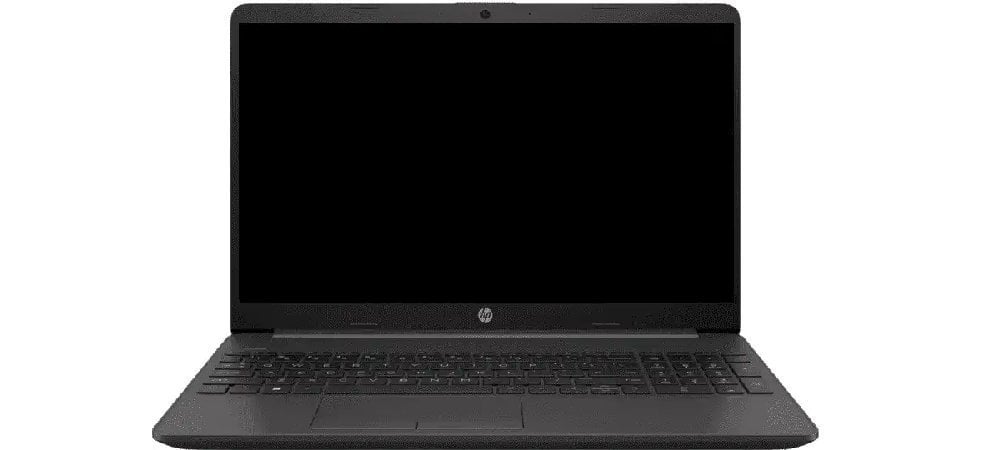If your Windows computer displays a black screen after you set it to boot in Safe Mode, don’t worry! There are a few ways to fix it. Here’s what you need to do:
Forcing a Hard Reboot
- Press and hold the power button for about 10 seconds until your computer turns off entirely.
- Wait a few seconds before pressing the power button to turn your computer on again.
This often solves basic display issues.
Troubleshoot the Graphics Driver
A corrupted or outdated graphics driver is a common cause for a black screen. Here’s how to address it:
- Forcibly reboot your computer three times in a row to enter the Windows Recovery Environment (WinRE).
- Navigate to Troubleshoot -> Advanced options -> Startup Settings -> Restart.
- Your computer will restart with a list of options. Press the number key associated with “Enable low-resolution video”.
- If Windows boots successfully, the problem likely lies with your graphics driver. Visit your graphics card manufacturer’s website to download and install the latest version.
Disable Fast Startup
The Fast Startup feature in Windows can sometimes lead to display issues. Follow these steps to disable it:
- Force a reboot three times to access the WinRE.
- Go to Troubleshoot -> Advanced options -> Command Prompt.
- In the Command Prompt, type
powercfg.exe /hibernate offand press Enter. - Close the Command Prompt and try restarting your computer.
System Restore
If the previous fixes don’t work, System Restore can revert your computer to a working state. Here’s how to do it:
- Access WinRE by forcing three reboots.
- Select Troubleshoot -> Advanced options ->System Restore.
- Choose a restore point created before the black screen issue started and proceed with the restore process.
Note: System Restore will not affect personal files but may remove recently installed programs or drivers.
If you’ve tried everything and the black screen persists, there might be a hardware problem. It’s best to consult a computer technician in that case.
Understanding Windows 10 Black Screen Issues
Windows 10 black screen problems can be a real headache. Let’s break down the different scenarios and troubleshooting steps so you can get back to work without much fuss.
Identifying Black Screen Scenarios
Different black screen scenarios may occur during the use of a Windows 10 system. The black screen of death typically appears before the sign-in screen or after signing in, leaving the user with a non-responsive blank display. Some users may experience a black screen when they start their computer, or during normal operation, which can signal anything from a simple glitch to a more serious hardware issue.
System and Hardware Troubleshooting
First, check basic hardware connections; this includes ensuring the monitor is on and cables are securely connected. If the screen is still black, try using the power button to perform a hard reboot. Booting into Safe Mode can also help bypass driver and software issues that might cause a black screen by only loading essential systems and services. For potentially faulty hardware like a video card or display, Windows 10 has built-in diagnostics that can help you identify the issue.
Software and Driver Conflicts
Software incompatibilities, particularly after recent Windows updates or driver installations, can result in a black screen. Rollback or update graphics drivers using Safe Mode or Device Manager. This often involves checking for updates to the video adapter or display drivers through Microsoft’s support site or the hardware manufacturer’s portals.
Boot Process Interruptions
Interruptions during Windows 10 startup can lead to a black screen. If the operating system doesn’t boot normally, try accessing Startup Settings by pressing F8 or Shift + F8 during boot-up, though it may differ for computers with UEFI firmware. Use this to switch to Safe Mode or to repair your system. Ensuring that the system BIOS or UEFI firmware is properly configured and updated is also crucial for a seamless boot process.
Advanced Recovery Options
When a Windows 10 computer displays a black screen, especially after trying to boot in safe mode, certain advanced recovery options can be a lifeline. These features help troubleshoot and resolve issues by providing different methods to restore the system’s functionality. Here’s how to navigate and utilize these essential tools.
Accessing Windows Recovery Environment
The Windows Recovery Environment (WinRE) can be reached by restarting your computer and pressing the F8 key as it boots up. If this doesn’t work, select Settings > Update & Security > Recovery. Under Advanced startup, click Restart now. This opens up a realm of repair opportunities.
Using Safe Mode Variants
Once you’re in WinRE, the Troubleshoot > Advanced options > Startup Settings path allows rebooting into Safe Mode variants. Pressing F4 boots into Safe Mode with basic drivers, F5 for Safe Mode with Networking, and F6 for Safe Mode with Command Prompt, enabling further network and system investigations.
Windows 10 System Restore and Reset
Under the Advanced options, you’ll see the System Restore functionality, allowing your system to roll back to a previous stable point without affecting files. For a more drastic measure, Reset this PC provides options for a Factory Reset or to reinstall Windows 10 while keeping your files.
Windows Boot Configuration and Diagnostics
Within the Recovery Environment, you can utilize Boot tab settings in the System Configuration utility (opened with msconfig in Command Prompt) to diagnose startup issues or to enter Diagnostic Mode. This simplifies your system to its most basic state and helps isolate problems without interference from non-essential software and services.
Preventive Measures and Maintaining System Health
To keep your Windows 10 computer running smoothly and avoid the dreaded black screen, a few key practices should be part of your regular maintenance routine.
Regular System Updates and Driver Management
Always keep your system up to date with the latest Windows updates. These updates can include vital security improvements and bug fixes that prevent potential problems. It’s equally important to update your device drivers, particularly the graphics or display driver, as an outdated video card driver is often the culprit behind screen issues.
- Navigate to Settings > Update & Security > Windows Update to check for new updates.
- Use the Device Manager to update your video card and other hardware drivers.
Optimizing Startup and Background Services
Too many programs launching at startup can slow down your computer and lead to issues. Streamlining your startup process can help:
- Open Task Manager and go to the Startup tab to disable unnecessary startup applications.
- Limit background services by tweaking the Services settings, found by running
services.mscin the Run dialog (Windows key + R).
Creating Backup and Recovery Drives
Regular backups are your safety net in case of an operating system failure. Windows 10 includes built-in tools for creating recovery drives and backing up your system:
- Use Settings > Update & Security > Backup to set up regular backups to an external drive or network location.
- Create a recovery drive by searching for
Create a recovery drivein the Start menu, allowing you to reset your password or recover your account if you encounter a blue screen of death or other serious issues.
By adhering to these procedures, you can significantly reduce the risk of encountering screen problems and ensure that your system is prepared to handle any errors that do occur.
Frequently Asked Questions
Navigating issues with a Windows 10 system can be challenging, especially when confronted with a black screen. The following frequently asked questions help to address common concerns and provide clear solutions for those tricky situations where the screen just won’t cooperate.
How can I boot into Safe Mode from BIOS when faced with a black screen on Windows 10?
When your screen goes black, accessing the BIOS can lead you to Safe Mode. Restart your PC and tap the F2, DELETE, or equivalent key to enter the BIOS setup. Look for the ‘Boot’ menu, select ‘Safe Boot’, and then choose ‘Minimal’ to start in Safe Mode.
What should be done if my Windows 10 screen is black, even in Safe Mode?
If Safe Mode also presents a black screen, it’s possible that your display drivers are the issue. In such cases, you might want to use a Windows Recovery Drive to boot your computer and then uninstall or update the graphics drivers through Device Manager.
What steps can I take if my screen remains black with only a cursor visible in Safe Mode?
This situation often signals a problem with the user interface. Try the Windows Key + P shortcut to toggle display modes. If it doesn’t work, opening Task Manager by pressing Ctrl + Shift + Esc and running a new task such as explorer.exe may resolve the issue.
Is there a way to fix a ‘black screen of death’ on Windows 10?
Yes, often referred to as the ‘black screen of death’, it’s usually fixable by performing a hard reset of the computer, checking the monitor connections, or restarting the Graphics Driver with the Windows Key + Ctrl + Shift + B shortcut.
How do I exit Safe Mode in Windows 10 if my screen is black?
Exiting Safe Mode can be done by opening the System Configuration tool. Press Ctrl + Alt + Delete, open Task Manager, run a new task msconfig, navigate to the Boot tab, uncheck ‘Safe boot’, and restart your computer.
If my Windows 10 PC is stuck on a black screen, how can I initiate Safe Mode from a power-off state?
Starting Windows 10 in Safe Mode when the PC is off is straightforward. Press the power button and then hold the Shift key while selecting Restart. This should take you to a troubleshooting menu where you can choose Safe Mode options.







